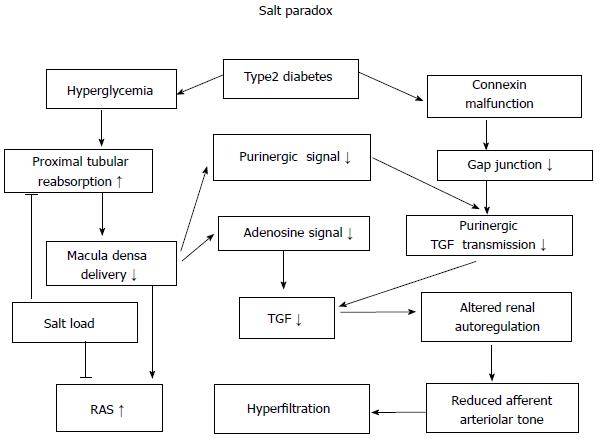Copyright
©The Author(s) 2015.
World J Diabetes. May 15, 2015; 6(4): 576-582
Published online May 15, 2015. doi: 10.4239/wjd.v6.i4.576
Published online May 15, 2015. doi: 10.4239/wjd.v6.i4.576
Figure 1 Working hypothesis for glomerular hyperfiltration in diabetes.
On the one hand, hyperglycemia enhances sodium reabsorption in type1 and type 2 diabetes, thereby decreasing the delivery to macula densa with resultant weakening of tubuloglomerular feedback (TGF). The latter impairs renal autoregulation that dilats afferent arterioles, and activates renin-angiotensin system (RAS). On the other hand, TGF signal by adenosine triphosphate (P2) is damaged in type 2 diabetes due to connexin phosphorylation and gap junction malfunction, worsening glomerular hyperifiltration. High salt intake inhibits proximal tubular reabsorption, thereby increasing the delivery of sodium chloride to macula densa. This ameliorates pathological afferent arteriolar dilation by the restoration of TGF through adenosine (A1) signal[18].
- Citation: Takenaka T, Inoue T, Watanabe Y. How the kidney hyperfiltrates in diabetes: From molecules to hemodynamics. World J Diabetes 2015; 6(4): 576-582
- URL: https://www.wjgnet.com/1948-9358/full/v6/i4/576.htm
- DOI: https://dx.doi.org/10.4239/wjd.v6.i4.576









